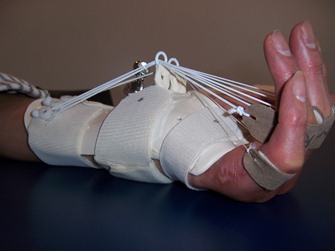
Minimally invasive treatments that do not remove the cord (NA/PNF and collagenase injection), especially if the patients tends to suffer from early recurrence. In special cases the doctor will decide whether or not and how long a splint should be worn.Ī night splint is probably beneficial after This might be different after operating a recurrent contracture. Wearing a night splint long term in addition to hand therapy after a first surgery (fascietomy) is probably not required. But this is only effective as long as the splint is worn link There is some indication that wearing a night splint can prevent contracture. The results of available trials and case reports can be summarized as below. Because wearing a night splint is not dangerous and has no severe side effects it might be at least worth a try to preserve or even improve the result of the treatment. Individually it is unfortunately very difficult or impossible to predict how the disease progresses and how effective a night splint will be. When and how long should a night splint be worn?Īfter needle fasciotomy (NA) or collagenase injection, where the cord is broken but not removed, regularily wearing a night splint might help postponing recurrence of the contracture. Please do not expect that this is always the case!Īfter 2.5 months of static night splinting:Īfter 2.5 years of static night splinting:


In this case wearing a night splint regularly even improved the outcome of the NA. Albrecht Meinel, Dupuytren-Ambulanz, Germany. Several impressive case studies have been published but it has to be kept in mind that those are selected individual cases and it is not sure whether or under which conditions another patient would achieve similarly good results.Below example shows an excellent result after needle fasctiotomy (NA, PNF). Occasionally splints are also used as an attempt to prevent contracture without prior treatment.Ī positive example of the effect of static night splinting Therefore the goal is improving symptoms and slowing down progression. Avoiding recurrence completely might not be possible because Dupuytren disease is in the genes and for the time being we have no means to fully cure Dupuytren's. The goal of wearing a (night) splint long term is generally to improve the result of the previous treatment and to avoid or postpone recurrence of the contracture. It may be that splinting after surgery, where the cord is fully removed, is not beneficial but it is beneficial after minimal invasive breaking of the cord by needle fasciotomy or collagenase injection. For example patients report that wearing a night splint regularly after needle fasciotomy avoided recurrence of the contracture.
FINGER SPLINT DYNAMIC VS STATIC TRIAL
Also the benefit after needle fasciotomy has not been demonstrated in a trial but there is a series of positive case reports from patients and doctors. segmental aponeurectomy, has not been investigated yet. The use after minimal surgery that removes only a part of the cord, e.g. Most of them investigated the use of splints after surgery finding no benefit.

For the time being we only have a few, somewhat meaningful studies or trials.

over months and years, is currently still being disussed controversy_on_splinting because clear evidene is still missing. The form of the splints is varying strongly, some are standard products, others are individually manufactured and adapted. Wearing a splint day at night over a longer period of time (weeks) is usually not recommended because eventually the joints may become stiff. They are worn mostly at night, while - for s shorter period of time - some are also worn during the day. Hand splints are often worn after hand surgery (typically a fasciectomy), needle fasciotomy (abbreviated as NA or PNF) or collagenase injection (brand name Xiaflex or Xiapex). Below we are showing examples of both types of splints. The other type of hand splints are dynamic splints that exercise force onto the finger and try to reduce contracture by doing so. Their pupose is only to avoid curling of the finger(s) at night and thus avoiding further contracture. Below comments mostly refer to static night splints, which do not press or pull on the finger. It probably depends on the situation whether wearing a hand splint is beneficial or not. Is hand splinting beneficial for Dupuytren disease?


 0 kommentar(er)
0 kommentar(er)
